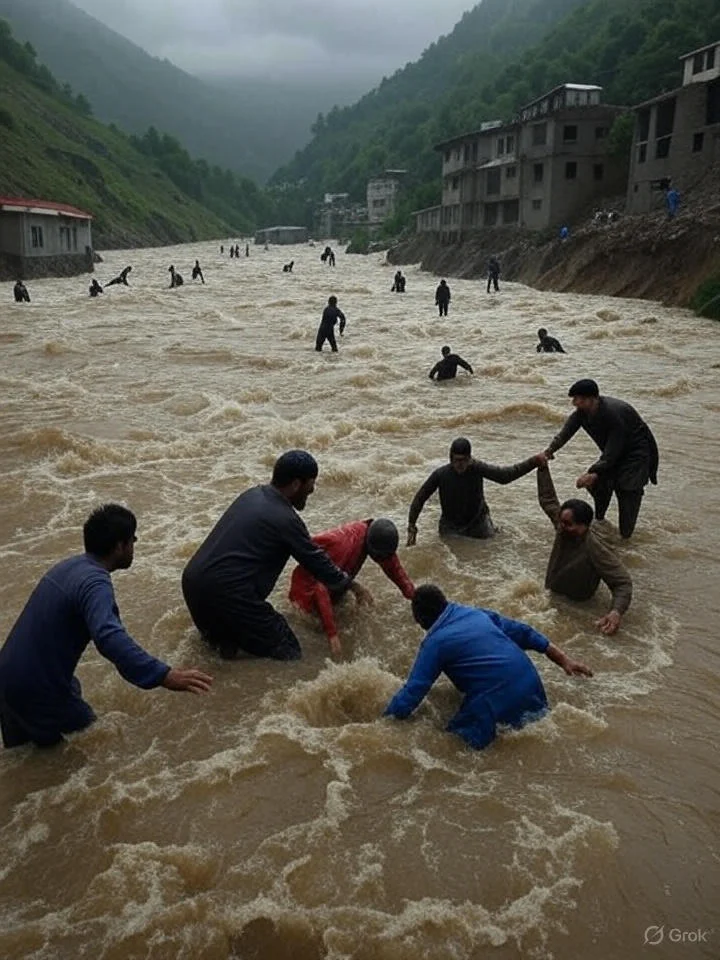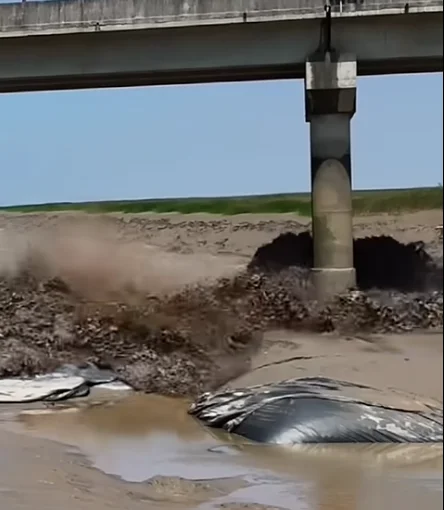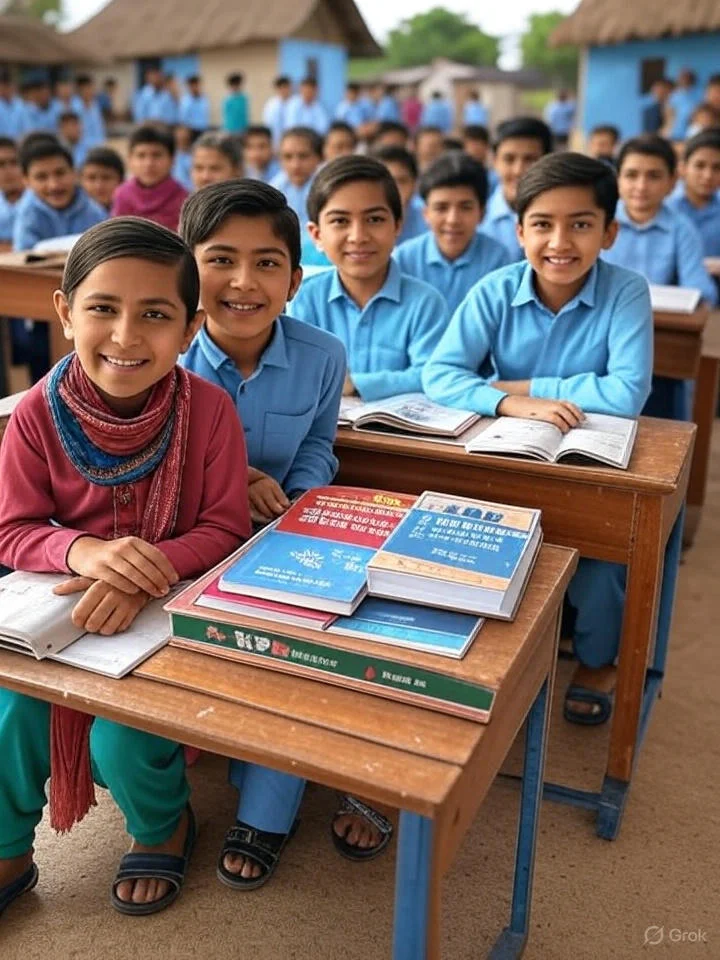PESHAWAR, July 7, 2025 – The province of Khyber Pakhtunkhwa (KP) is facing the worst flooding of the 2025 monsoon season.
Heavy rains have caused rivers to overflow, washing away homes, roads, and bridges. More than 30 people have died, and many areas are cut off.

Deaths and Injuries:
- 32 people have died, including 14 children and 8 women
- More than 45 people are injured, many are in serious condition
- 11 tourists are missing in Swat after floods hit a resort area
Damage to Homes and Roads
- 22 houses destroyed by floodwaters
- 8 bridges collapsed, cutting off many remote villages
- More than 50 kilometers of roads damaged
- Electricity is gone in over 15 districts
Areas Most Affected
- Swat Valley – 18 people died, including 5 at a riverside campsite
- Lower Dir – 6 deaths reported after houses collapsed
- Chitral – Cut off from other areas due to broken bridges
- Malakand Division – Heavy damage to crops and farmland
Why This Flood Is So Big?
Record Rainfall:
- 450 mm of rain fell in July – the most in 10 years
- More rain expected until July 15
- Reasons include:
- Climate change
- Warmer sea temperatures
- Strong winds bringing more clouds
Rescue and Relief Work:
- 5,000 army soldiers are helping with rescue and relief
- 12 relief camps are giving food and shelter
- 5,000+ food packs have been given to flood victims
- Search teams are looking for the missing tourists in Swat
Government Action:
- KP Chief Minister announced Rs. 2 million for families of those who died
- Swat Deputy Commissioner suspended for not warning tourists
- People are protesting over poor planning
- Opposition parties want a full inquiry in Parliament
Why KP Is at High Risk for Floods?
- Many areas have steep mountains, which make water flow faster
- 60% of the province is in a high flood-risk zone
Human Mistakes:
- Illegal buildings near rivers
- Cutting trees increases water flow
- Old and weak flood systems not repaired
Stay Safe During Rain
- Stay away from rivers and flooded areas
- Keep your phone and power banks charged
- Store clean drinking water
- Follow PDMA alerts – call 1129 or visit pdma.gov.pk
Summary:
Khyber Pakhtunkhwa is facing a big disaster due to floods. Dozens of people have died, many are injured, and villages are cut off.
Climate change and weak planning made the situation worse. Government and rescue teams are working hard, but help is still needed.



